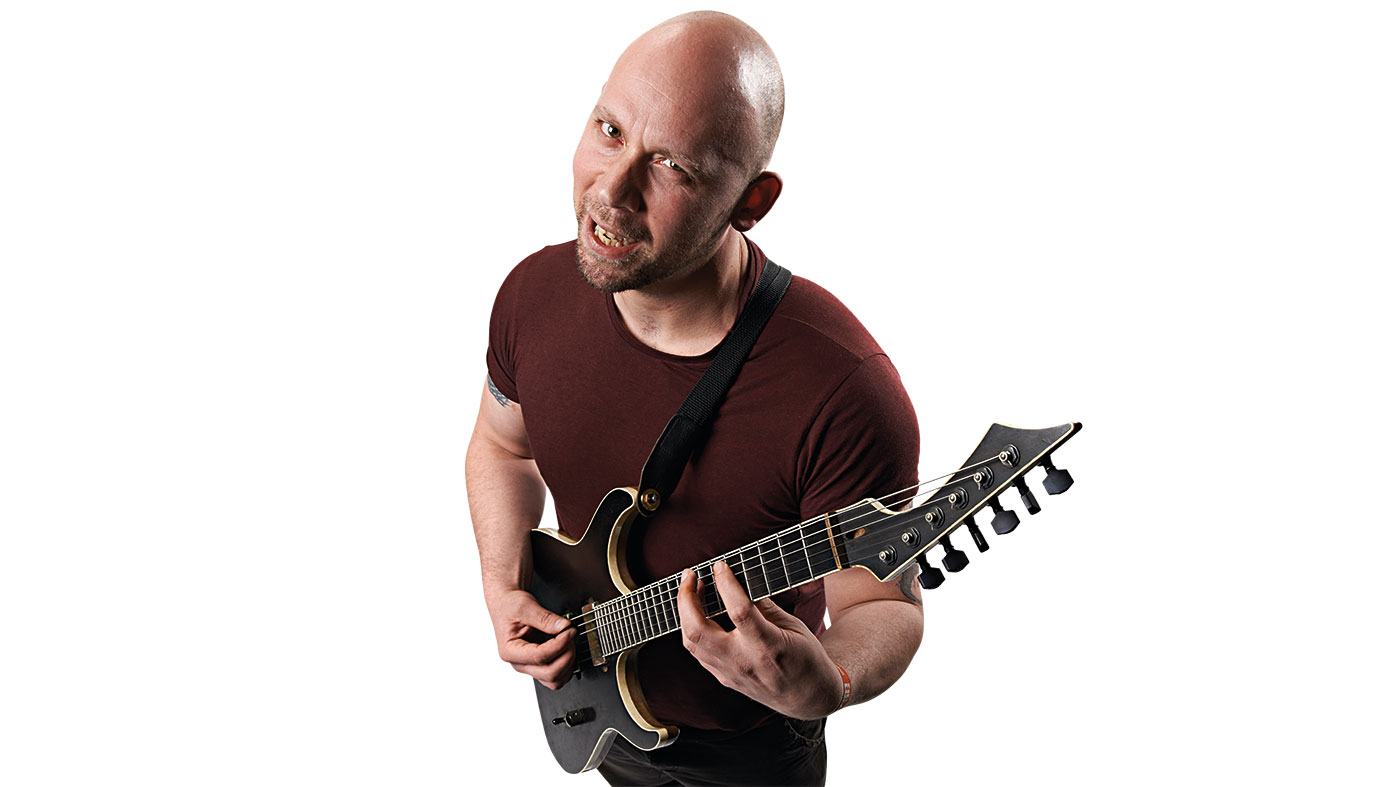Me and my guitar: Sikth's Graham ‘Pin’ Pinney
A look at Pin's Blackmachine B2

Sikth guitarist Pin is one of the very select group of Blackmachine B2 owners, and it turns out he was an early convert...
Starting the Machine
“Initially Doug [Campbell], who is the sole entity of Black Machine, turned up at a show we were doing in London. He pretty much appeared with two Ritter soft cases and two [guitars] in there. He rocked up and said, ‘You’ve got to try these out’.
More than anything just getting hold of one just felt right for me
“More than anything just getting hold of one just felt right for me. I came from that SuperStrat kind of thing but I think I tired of dealing with Floyd Roses. To have the hardtail just felt comfortable.”
Construction
“It’s ebony [top], ebony fretboard, a swamp ash body, ivoroid binding, rosewood neck with ebony fillets… I went a bit different with my other B2 - that’s mahogany bodied with a sapele top and the same rosewood neck but with snakewood fingerboard. That one sounds quite different and it’s also insanely thin.
“This is a slim guitar, that one is pretty much neck [deep]. I could talk for hours about how Doug thinks about things. His philosophy is looking at density and how he got this tone. Basically, this Swamp ash, being a lighter wood, is thicker, the mahogany being denser wood is thinner.”
Custom pickups
“These pickups are what Doug designed for himself, effectively. They’re made by a company called ASL [Ask Scott-Lockyer] and they’re pretty low output for me. I was very dubious having come from playing guitars with EMGs but rapidly disliking the feel, through to playing Bare Knuckles.
The ASL pickups clean up and give some amazing tones with the coil tap
“Doug said, ‘You’ve got to give this a go - let me take your output down.’ So I did and the dynamics and the effect of the volume knob and the controls… I think they clean up and give some amazing tones with the coil tap, and I believe their alnico magnet as opposed to ceramic.”
Get the MusicRadar Newsletter
Want all the hottest music and gear news, reviews, deals, features and more, direct to your inbox? Sign up here.
Tunings
“I like experimenting with tunings but with Sikth we adjust the bottom string a lot. Our [main] tuning is based on being a half step down and we predominantly play G# at the bottom [G# -G# -C# -F# -A# -D# ] which gives a heavier feel.
“People always ask why we never used seven-strings and quite frankly for us it was never comfortable and we felt we had the dynamics. Not having the extra string enables us to jump a lot more. We do a lot of tapping so getting to the highs and lows is done that way [with the tuning] so we don’t need that additional string.”
Total Guitar is Europe's best-selling guitar magazine.
Every month we feature interviews with the biggest names and hottest new acts in guitar land, plus Guest Lessons from the stars.
Finally, our Rocked & Rated section is the place to go for reviews, round-ups and help setting up your guitars and gear.
Subscribe: http://bit.ly/totalguitar
“They didn’t like Prince’s bikini underwear”: Prince’s support sets for the The Rolling Stones in 1981 are remembered as disastrous, but guitarist Dez Dickerson says that the the crowd reaction wasn’t as bad as people think
“We are so unencumbered and unbothered by these externally imposed rules or other people’s ideas for what music should be”: Blood Incantation on the making of Absolute Elsewhere and how “Data from Star Trek” saved the album – and the studio












